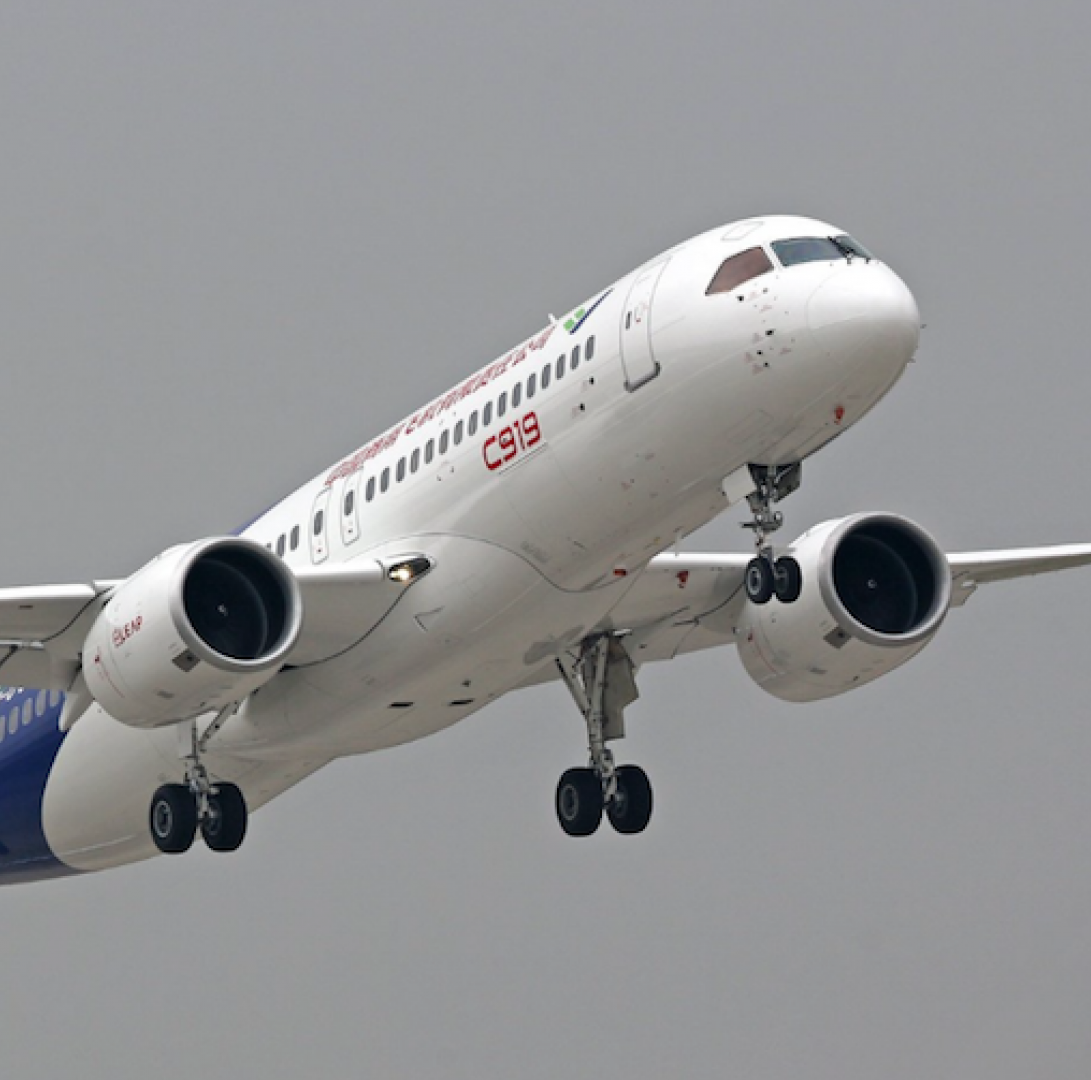Military
Chinese Aircraft Maker Comac Gets Bids for Wide-Body Engines

Published:
Last Updated:

Commercial Aircraft Corporation of China (Comac) is a homegrown Chinese airplane builder that recently began test flights on its new C919 single-aisle passenger jet. The company has joined up with Russian firm United Aircraft Corporation to design and build another passenger jet, the CR929, a dual-aisle, wide-body plane that, unlike the C919, is intended to be a new design from the ground up.
According to a Wednesday report from Reuters, the China-Russia partnership has now received bids from seven aircraft engine makers to provide the engines for the CR929. That number seems to be a little high.
First, the usual suspects: General Electric Co. (NYSE: GE); the Pratt & Whitney division of United Technologies Corp. (NYSE: UTX); and Britain’s Rolls-Royce. Airline industry journalist Jon Ostrower adds Russia’s Aviadvigatel and China’s own ACAE. But that’s only five.
A couple of others that might be on the bidder list are Engine Alliance, a joint venture of General Electric and Pratt & Whitney, and French aircraft engine maker Snecma. One more outside possibility is CFM International, a joint venture between GE and Snecma’s parent company Safran.
According to Reuters, Comac and its Russian partner will create a team to analyze the proposals with a goal of completing an evaluation by the end of this year.
There are a few political hurdles here, as well as the usual assortment of technical ones. China will want the engines to be designed and built in the country and almost certainly will demand a transfer of the technology in exchange for the contract. This sort of arrangement has worked well with automakers and consumer electronic products, but giving away the design of a state-of-the-art aircraft engine that will take years and billions of dollars to build is likely to raise concerns with all but the Russian and Chinese governments.
At one time the CR929 was once expected to use engines from GE or Rolls-Royce, but China has since announced its intention to design and build its own engines and has consolidated several state-owned entities into a single company, Aero Engine Corp. of China (AECC), to do the work. The government announced last September that a domestically built engine is expected for the C919 but gave no estimated delivery date.
The larger CR929 remains a long way from entry into service. Preliminary design work is expected to be approved next year and design documentation is due in 2021, with the first test flight coming in 2023 and entry into service in 2026.
Ever wanted an extra set of eyes on an investment you’re considering? Now you can speak with up to 3 financial experts in your area for FREE. By simply
clicking here you can begin to match with financial professionals who can help guide you through the financial decisions you’re making. And the best part? The first conversation with them is free.
Click here to match with up to 3 financial pros who would be excited to help you make financial decisions.
Thank you for reading! Have some feedback for us?
Contact the 24/7 Wall St. editorial team.